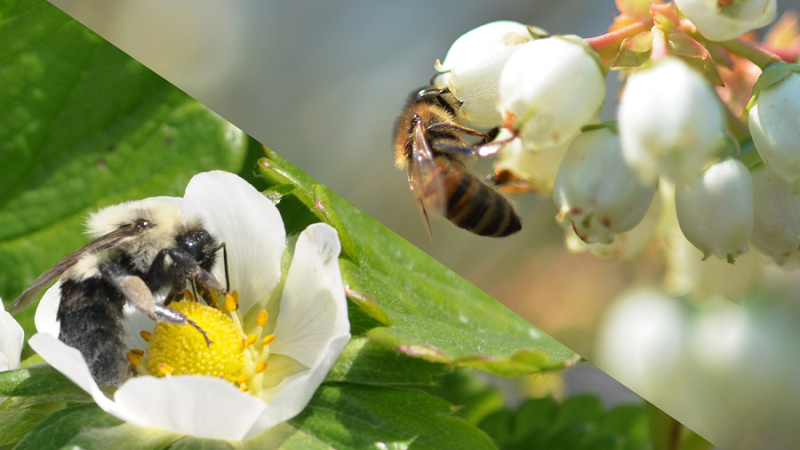How To Maintain a Healthy Microclimate for Your Greenhouse Crops

Greenhouse growers have an intricate ecosystem to maintain. The walls surrounding an indoor microclimate must resist the temptation to abide by conditions of the outside world. The strategies for creating perfect equilibrium are diverse, resulting in varied benefits for each plant type. What is involved, and how can you curate temperature, moisture and more for happy greenhouse residents?
Balancing Insulation and Sunlight
You may have considered additional insulation for greenhouse walls but fear it will impact sunlight permeation — however, it’s less of a problem than you think. Installation is possible and lucrative in units with a compatible layout and heating season. Adding external materials like fin or foil bubbles lowers wall temperatures up to 50°F, slashing the radiant heat flowing from the exterior.
If you manage the walls, then it’s easier to control the rest of the interior. Any insulation maximizing air pockets as heat storage is a viable option. Blending insulation with heat tracing potential diversifies its capabilities, primarily in freezing temperatures when microclimates are in jeopardy of freezing.
Using Less Energy for Heightened Activity
The reduction in temperature volatility from suitable insulation installation reduces fuel and electricity consumption, whether through oil or renewables. Minimizing usage is advantageous for financial returns, plant yield, and resource awareness. What are other ways microclimates can design an environment requiring fewer resources?
Anti-condensation foil is one way to do this. It keeps heat contained as plants grow in rough winter months. Flowers are less strained to nourish their roots when heat is more readily available. Additionally, greenhouse owners reduce pressure on generators while maintaining a balanced temperature. Case studies demonstrate a possible gas savings of five cubic meters weekly on a 28,000 square-meter plot.
Aerated flooring is another opportunity. Subsurface houses transport heating and cooling air, simultaneously manipulating moisture to desired levels. Greenhouses may connect systems to cogeneration assets or heat pumps, making conventional boilers and propane devices obsolete for healthier ecological conditions.
Growing With Technology
Regulating temperatures improves with data-gathering and automation peripherals. Smart ag tech provides comprehensive solutions for enhancing climate visibility concerning plant health.
Algorithms, sensors and even AI observe temperature, humidity, and ventilation, as well as their impacts on soil health and carbon density. Current research proves approaches like digital twins and reinforcement learning result in enhanced cucumber cultivation from autonomous maintenance.
Hawaii residents see smart greenhouses as a way to transform its 0.4% agricultural gross domestic product back to its 1950s glory. Robotics, drones and more assist in climate control by automating lights, surveying water supply, and reducing human influences and errors on the microclimate.
Experimenting With Alternative Methods
Is it worth it for you to invest time and money into nontraditional gas systems or humidity control? Growers are even moving to mechanical cooling to avoid rising gas prices. Novel techniques may be more effective for microclimate control than antiquated management. Here are several options for you to consider:
- Spectral glazing: Blocks infrared waves and alters other forms of light to improve photosynthesis
- Hybrid greenhouses: Leverages positive and negative pressure with techniques like recirculation for more consistent air conditions
- Heat pumps: Moves hot air around the greenhouse where you need it most
- Desiccant systems for dehumidification: Silica gel regulates temperatures by gripping humid air
- Canopy-direct air movement: Challenges conventional ceiling fan methods by placing ductwork underneath tall plants to release trapped humidity
Becoming More Hands-Off
Skepticism rises with the thought of technology having a heavier hand in plant care than humans, but this might benefit the crops. Many plants are resilient and adaptable, growing in more conditions than planters perceive. Micromanagement suggestions perpetuate temperature control as finicky, while understanding your crops more deeply is the best way to manage a successful microclimate.
Being too hands-on presents more opportunities to create food safety concerns and spread diseases, which have side effects on moisture and temperature control by impacting plant development. You may use no-pinch production methods, space crops out more for stretching and minimize shearing to support growth through optimized photosynthesis.
Managing Microclimate Without Micromanagement
Temperature control in greenhouses and other gardening environments requires attentiveness to several metrics and tools. From moisture to insulation, obtaining the ideal balance is an art form. Challenge yourself to get curious about the factors impacting plant comfort and growth, and experiment until you become an expert at microclimate oversight.










